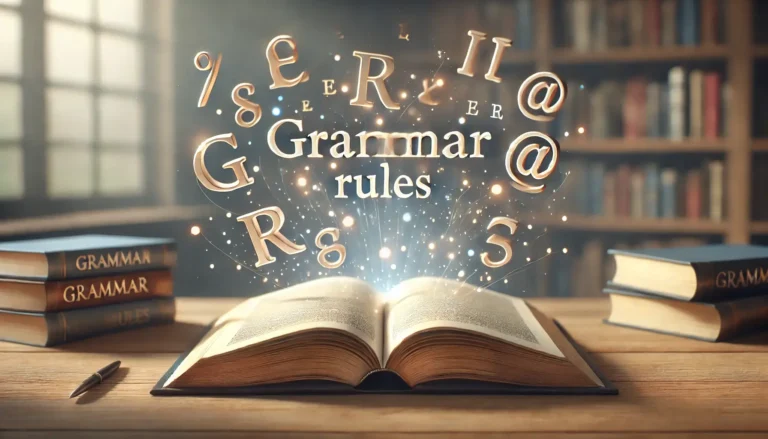A clause is a group of words that contains a subject and a verb that are related. This relationship is crucial because a clause provides information about what the subject is or is doing, rather than being just a random collection of words. Since a clause expresses an action or a state of being, it can often—but not always—function as an independent sentence.
A sentence can consist of a single clause or multiple clauses. The key characteristic of a clause is that it must contain a related subject and verb. Clauses play various roles in English, allowing for numerous ways to structure and combine them.
It is important to remember that clauses form sentences. They are the fundamental building blocks of language and are essential for all verbal communication. Clauses can stand alone to convey simple information, or they can be combined to express more complex thoughts and ideas.
Understanding clauses is crucial for creating clear, effective, and understandable content. Additionally, a solid grasp of clauses aids in answering transformation questions.
Types of Clauses
Independent Clauses
Independent clauses, also known as main clauses, are the most basic types of sentences. Every sentence contains at least one independent clause. Each independent clause includes three essential elements:
- The subject
- The predicate
- A complete thought
Examples of Independent Clauses:
- Musonda ate Nshima while Bwalya watched the baby.
- The dog barked loudly at the stranger.
- She finished her homework and went to bed.
Independent clauses can be combined with other independent or dependent clauses to form more complex sentences.
- A sentence with two independent clauses is called a compound sentence.
Example: She likes tea, but he prefers coffee. - A sentence with one independent clause and one or more dependent clauses is called a complex sentence.
Example: While drinking beer, Musonda smoked his cigarettes.
We will continue exploring these ideas in the next lesson when we delve into the structure of sentences.
Dependent Clauses
A dependent clause (or subordinate clause) contains a subject and a verb but does not form a complete sentence. Not every sentence contains a dependent clause because they are not always necessary to create meaning.
Examples of Dependent Clauses:
- Never trust a thief because he can steal from you too.
- Because she loves to read books, she bought some at the bookshop.
- After singing in the dining hall, they went to town.
There are three subtypes of dependent clauses: adjective clauses, noun clauses, and the less common adverbial clause.
More Examples of Dependent Clauses:
- While he was driving, he spoke to his friend on the phone.
- If they drive fast, they will be here on time.
- Although she was tired, she finished her project.
Independent clauses are connected to the main clause using connecting words such as while, if, because, and after. If the sentence begins with an independent clause, there is no need to use a comma to separate it from the dependent clause, as shown below:
Examples:
- She bought some at the bookshop because she loves to read books.
- They went to town after singing in the dining hall.
- He spoke to his friend on the phone while he was driving.
- They will be here on time if they drive fast.
Other Types of Clauses
Coordinate Clause
A coordinate clause is a type of independent clause because it can stand alone as a complete sentence, expressing a complete thought. These clauses are called coordinate clauses because they are often connected by coordinating conjunctions such as and, but, or, nor, for, so, and yet. They can also be connected by semicolons when used within the same sentence.
Examples of Coordinate Clauses:
- He enjoys playing the piano, and she prefers singing.
- The sun was shining, but it was still cold.
- You can go to the park, or you can stay home.
Relative Clause
A relative clause is a type of dependent clause that provides more information about a noun (or noun phrase) in the main clause. It begins with a relative pronoun such as who, which, that, or whose.
Examples of Relative Clauses:
- The man who came is interesting.
- The book that you lent me was fascinating.
- The house, which was built in the 1800s, is now a museum.
Adjective Clause
An adjective clause is a specific type of relative clause that functions as an adjective, providing descriptive information about a noun. It usually begins with a relative pronoun such as who, which, that, or whose.
Examples of Adjective Clauses:
- The car that is parked in the garage is mine.
- The woman who is standing over there is my teacher.
- The cake, which she baked yesterday, was delicious.
Adverb Clause
An adverb clause is a group of words that functions as an adverb, modifying verbs, adjectives, and other adverbs by providing information about how, when, where, why, or to what extent an action or event occurs.
Adverb clauses often begin with subordinating conjunctions, which connect them to the main (independent) clause and indicate the relationship between the clauses.
Examples of Adverb Clauses:
- Time: He left school before his mum arrived.
- Place: She looked where she had lost her keys.
- Manner: She walked as if she was staggering.
Other adverb clauses can express cause, condition, contrast, comparison, or purpose. We will explore these topics in more detail later.
Noun Clause
A noun clause is a group of words that acts like a noun in a sentence. It can function as the subject, object, or complement of a sentence.
Examples of Noun Clauses:
- What they did shocked the entire school.
- Whether she will come is still unknown.
- The fact that he won surprised everyone.
Conclusion
As we come to the end of this topic, we should remember that understanding the various types of clauses is essential for mastering the structure and function of sentences in the English language.
Independent clauses, coordinate clauses, relative clauses, adjective clauses, adverb clauses, and noun clauses each play unique roles in conveying complete thoughts, adding descriptive detail, modifying actions, and acting as sentence components.
By recognizing and effectively using these different clauses, you can create clear, complex, and nuanced sentences, enhancing both written and verbal communication.
Mastery of clauses not only improves your grammatical accuracy but also enriches your ability to express ideas with precision and depth.







